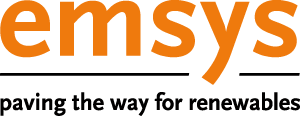Predicting the power of offshore wind farms more accurately
Researchers measure wind with laser
Oldenburg, 14 September 2020 – Strong changes in wind speed within time periods of less than half an hour - these are so-called wind ramps. If they occur unexpectedly, they pose problems for electricity traders and grid operators: if turbines in offshore wind farms generate significantly more or less electricity than predicted on short notice, this can have an impact on the electricity grid, and compensation payments may also become due. To improve the prediction of wind ramps, scientists at the Center for Wind Energy Research (ForWind) at the University of Oldenburg want to use laser beams to measure the wind far upstream of the wind farm. For their research project "WindRamp – Observer-supported prediction of grid congestions and possible feed-in of offshore wind energy for operational grid management and trading processes" the team around wind energy expert Prof. Dr. Martin Kühn together with project partners will receive around 2.75 million euros. The project is supported for three years by the German Federal Ministry of Economics.
In order to predict the performance of offshore wind farms, operators have so far relied mainly on weather models. These computer models can predict the wind power output for sites all over the world quite reliably a few minutes to several days in advance. Based on the forecasts, wind power is traded on the electricity market. Network operators also require this information to optimally integrate the generated wind energy into the power grid. However, strong, short-term changes in wind speed often cannot be predicted reliably enough with the methods currently used. "For more precise forecasts, local measurement data is necessary," emphasizes Kühn, who is coordinating the project.
This is where WindRamp steps in: The project aims to measure the wind with laser beams before it reaches the wind farm, upstream, so to speak. For this purpose, the team uses the remote sensing method Lidar (Light detection and ranging), which operates similar as radar. Lidar devices use laser pulses to determine distances and wind speeds. "Modern lidar devices can determine wind fields at a distance of ten to twelve kilometers from a wind farm," Kühn reports. The project team wants to use such measurements to develop a so-called "observer-based wind power forecast".
This new type of forecast is then to be integrated into existing model-based forecasting procedures. Doing so, the researchers are faced with several challenges: They have to take into account that the wind rarely flows completely uniformly. In addition, the wind field between the measuring point and the wind farm might change and the wind can become stronger with height.
In order to be able to investigate air flows even better in the future, the team therefore also wants to improve the range and resolution of lidar devices. The aim is to extend the time horizon of the forecasts. The team is collecting the necessary measurement data in a measurement campaign lasting about two years at the offshore wind farm Nordergründe northeast of Wangerooge.
In addition to ForWind, the project consortium includes the DLR Institute of Networked Energy Systems in Oldenburg as well as the companies energy & meteo systems, Abacus Laser, Metek Meteorologische Messtechnik, TenneT TSO, EWE Trading and the wind farm operator wpd offshore solutions.

